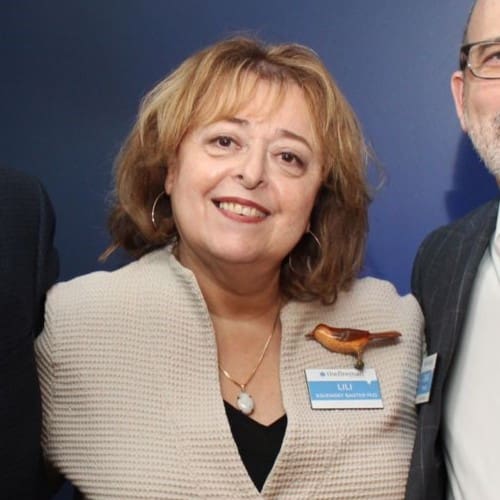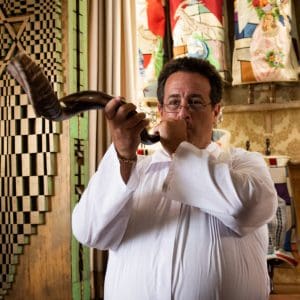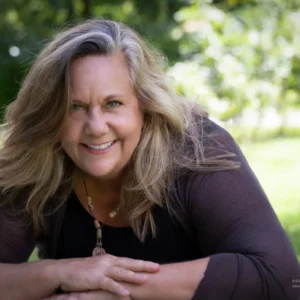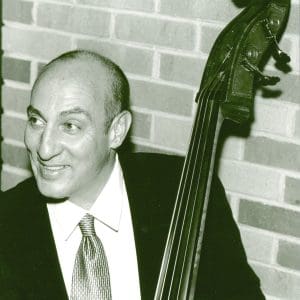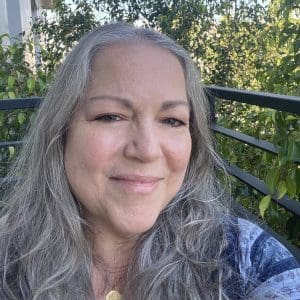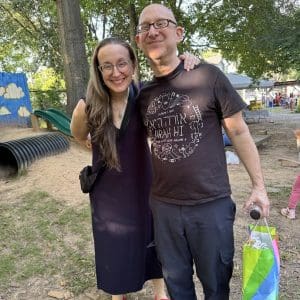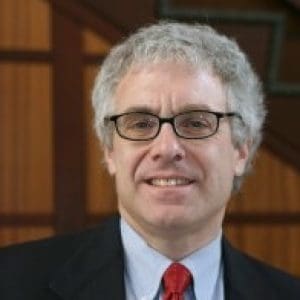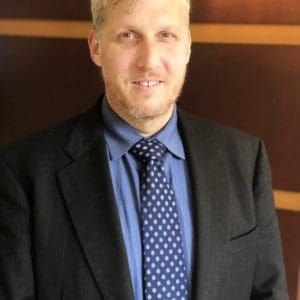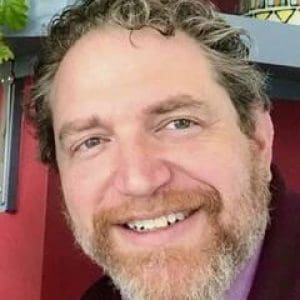The Holiness of Camp Time!
Ramah Reflections
By Rabbi Laurence Rosenthal
July 19, 2016 | 13 Tammuz 5776
Time is a very important part of the Jewish spiritual experience. It all began with the creation of the universe. Our sacred scripture begins with a story of creation which is embedded in time. The very first word is about time – In the beginning. The story unravels with each and every material creation surrounded by time – day one, day two, etc. Our rabbis and the rabbinic tradition focus intently on time as a way to enhance and sanctify ritual. Our day is circumscribed by prayer trice daily – Morning, noon and night. Shabbat has its special time which is marked and celebrated through ritual – Candle lighting, Kiddush, Havdallah. Holidays have their season and their precise date on the calendar. For us Jews, time becomes an important component of our connection & communication with God. We Jews become proficient, even experts in time.
In many ways it's like a professional musician whose practice is structured and regimented. After years studying music theory, chord and scale structure, inversion and substitutions, that same musician is then able to improvise and play from the heart anything their soul desires. This is somewhat counter intuitive. You would think that a more unschooled, unstructured musician should be able play from the heart and not be encumbered with rules and theory obstructing their creativity. However, that's not what happens. Somebody without a mastery of the instrument is mute. Our spiritual obsession with time works the same way – By becoming masters of time, we are able to commune and connect with our God who is beyond and outside of time.
So I arrive at camp and find that there is a thing called Camp Time. It's very different from anything I'm used to. Everybody is running from place to place, people are being shuttled in golf-carts, flying by and nobody seems to have time to sit and chat for a moment. There is an endless list of things to do. That being said, even with this hustle and bustle, there is an over-all slow pace to camp.
At our first camp-wide program, Geoff Menkowitz, Ramah's director, welcomed all the hanichim(campers) by adah (Group) and then proceeded to pull out a wall clock. Although the clock was seemingly on the correct time, Geoff made a whole production about how the time is in fact wrong and proceeded to turn the time back an entire hour. This change in time has a practical purpose. With the summer night ending so late, Camp Ramah sets the clock back an hour so Shabbat can end earlier and retain the participation of their youngest campers. Havdala & Motza'ay Shabbat(After Shabbat) are a big deal up at camp so this time switch helps with bedtime.
There are other great examples of camp time but watching Geoff turn the clock back to officially start camp time really turned out to be an empowering moment for all the campers. By taking time, this ubiquitous, relentless, marching constant, present in all of our lives, and change it; to do what very few of us would ever consider, and say out loud and proud, "This is OUR time" really sets the stage for a month of possibilities, realities and beliefs that are open for questioning, new understanding and reaffirmation. Nothing needs to be a given up at camp. We are in control of who we are and what we are to become. Even down to the speed and rhythm of our lives, we are in control and we have the power to become who we want to become.
What Geoff did wasn't a new idea. In fact, it is quite ancient as Judaism implores us to be the masters of our own time. This is what Shabbat is all about. For 25 hours, our rabbis mandated a different focus for us, one that isn't focused on deadlines, time clocks and billing hours. Instead Shabbat has us delve into a timeless universe which allows for us to spend our moments with people we like and love. Shabbat gives us a structure to learn and study about the soul. Shabbat encourages us to reach beyond ourselves and towards the infinite.
Although our Shabbat experience at Ahavath Achim has some of these elements, there are other areas where our weekday enslavement to time finds its way in. So many of us are watching our watches waiting impatiently during the Shabbat Morning service for 12:00 p.m. (End of service, time for lunch) to arrive. So often we rabbis comment from the pulpit, even a bit disparagingly, about the sparse numbers in attendance at the beginning of our service. After Kiddush our synagogue clears out, and Shabbat as a communal experience ends.
Where are we all going? Why are we in such a rush? As a rabbi, I delude myself and pretend that everybody is off celebrating Shabbat at home around their lunch table with friends and family. Maybe they are at home taking a nap and enjoying these special, holy moments in spiritual reflection and awe. Who's to say? I can really only worry about myself and my family. Others are responsible for their own spiritual life.
Being at camp makes me wonder. Could there be more? Could Shabbat look different at AhavathAchim? Of course, I am not suggesting that we all leave our wrist watches at the door. But what if a core group of people committed to making more out of Shabbat at Ahavath Achim?
In truth, many have already started. If you're a regular at Torah Study, you know that the discussion doesn't only last an hour as there is always a group who remains in the Cavalier Room kibitzing, discussing and as we like to say (only half) in jest, "Solving the ills of world." We have a wonderfulkiddush book club – Read It Or Not. The best part about this book club is that you don't have to read the book to enjoy and participate in the discussion (That's a big plus for me as my reading que is a bit over loaded.) More and more, I am finding people enjoying a kiddush lunch and conversation with friends lasting easily 1.5 to two hours after service. Sometime there is a Post-kiddush Beit Midrash which is always great but, to be honest, don't occur often enough. Could there be more?
My friend and one of our congregation's spiritual leaders, Bonnie Levine, recently reminded me of the amazing feeling that our synagogue has on Yom Kippur afternoon and how she, along with others, desires such a spiritual place to exist more than once a year. Do you know the feeling on Yom Kippur afternoon? The place is buzzing. Folks learning, connecting, napping or just simply being. Walking through the synagogue on Yom Kippur afternoon is an amazing experience. Panel discussions, Torah learning, Drum-chant services – it's really amazing. Imagine if every Shabbat was like that.
Our entire perspective on time would change. We would no longer see our week as our secular society sets it up –The weekdays being primary and the weekend being secondary. What happens on a weekday is of vital important and what takes place on the weekend is discretionary, voluntary and basically irrelevant. No wonder why Judaism and Christianity have taken such a hit in our western civilization – Our holy days are relegated to the most insignificant time of our schedule. If we were able to make Shabbat a primary focus, we might, instead, see time in the way that our Jewish tradition labels the week – Sunday is Yom Rishon (Day One), Monday is Yom Shani (Day two), Tuesday is Yom Shelishi (Day three) and so on all the way up towards Shabbat. The time for renewal, spiritual exploration and love should be at the apex of our week, not an afterthought tossed into the weekend where the healing of one's soul has to compete with laundry, shopping and other chores.
What can Shabbat look like? Camp has taught me that we not only have the spiritual obligation to claim mastery over time but we have the power and strength to do it. If a bunch of Jewish kids up in Clayton, GA can turn their clock to the right time, so can we! Please share with me your ideas for making the 25 hours of Shabbat into an oasis in time.
What can Shabbat look like? Camp has taught me that we not only have the spiritual obligation to claim mastery over time but we have the power and strength to do it. If a bunch of Jewish kids up in Clayton, GA can turn their clock to the right time, so can we! Please share with me your ideas for making the 25 hours of Shabbat into an oasis in time.
Shabbat Shalom from Camp Ramah Darom,
Laurence
lrosenthal@aasynagogue.org
Rabbi Neil Sandler's Weekly Column
7-6-16
Below you will find an informative op – ed written by a particularly well – respected rabbi among his colleagues, Reuven Hammer. Rabbi Hammer, who made aliyah many years ago, was a pioneer within the Masorti (Conservative movement) in Israel and continues to be a strong advocate for Jewish religious pluralism. Rabbi Hammer's op – ed, written against the backdrop of the Israeli government's failure to implement an agreement that would raise the profile of religious pluralism at the Kotel, will challenge the feelings of many people. Perhaps Rabbi Hanmer will even challenge you to consider what the Kotel is, if it is "sacred" and, if so, does its sanctity extend beyond the boundaries of the plaza that houses the "Kotel" you and I know. I think that Rabbi Hammer, as he usually is in his op – eds, is "right on the mark" here. The Kotel has become something that was never envisioned when the Old City was liberated in 1967, an ultra – Orthodox synagogue, and not a place I seek to go when I am Israel. But the southern Kotel, often referred to as "Robinson's Arch" and the place where the to – date non – implemented Kotel agreement establishes a permanent egalitarian worship space…that space, for reasons Rabbi Hammer mentions, is truly stirring and uplifting.
Read Rabbi Hammer's piece and learn. Read his op – ed and, perhaps, be challenged. Read it and give it some thought and consideration.
Whose Wall Is It? (Jerusalem Post, July 1, 2016)
Rabbi Reuven Hammer
Once again our newspapers are filled with reports about controversies concerning the Western Wall. Once again there are demonstrations and protests pro and con about who can pray where along the stretch of retaining wall called the Kotel. Pronouncements are being made by rabbinical authorities about the sacredness of the place and the violation of its sanctity by this or that group that wants to pray in a way that is different from what the rabbi of the Kotel thinks is permitted or in violation of what he calls "minhag ha-makom" – "the customary usage of the place." Of course what is really at stake and what is really the cause of all the fuss is simply a struggle for power and control. It is the attempt of the official rabbinate to control religious life in Israel and to declare illegitimate all other groups that claim to represent Judaism as well. The answer to "Whose Wall is it?" must be, "…this Wall belongs to you and me."
I am astonished at the exaggerated statements concerning the sacredness of the Wall. Judaism has very few places that are considered sacred. Looked at objectively, the Kotel, after all, is not a wall of the Temple at all. It is a retaining wall created in order to enlarge the top of the mountain and provide a large platform for the glorified Temple that Herod wanted to create. That makes it extremely important logistically, but does not make it holy and therefore we should be wary of what Leibovitz called "Kotolotry." When early rabbinic writings spoke about the sacredness of the Western Wall, they were referring to the Western Wall of the Holy of Holies, part of which remained standing after the Romans had destroyed the Temple. That was sacred. Rabbis, including Rabbi Akiva, were known to visit that ruin. Only much later did the current Kotel become a place of pilgrimage and prayer when the Temple Mount was no longer accessible to Jews. Therefore it has become symbolic of Jewish independence and sovereignty and having free access to it is the right of every Jew.
The current Kotel may not have any sacredness attached to it, but it has historical importance since it is a monumental remnant of the Temple complex. However it is certainly no more important intrinsically than the Robinson's Arch area or than the Southern Wall with its great archways that were actually entrances to the Temple complex. The fact that for centuries Jews prayed at the Kotel has given it an emotional relevance that cannot be denied. The fact that it was separated from Jewish Jerusalem after 1948 until 1967 only added to it's meaning in our collective consciousness. I will admit that when I went there first in February of 1968, I was deeply moved. In addition to everything else, it seemed to represent the fact that Israel had survived a war that threatened it very existence. Today, in view of all that has happened since and the way it has been turned into a Haredi synagogue for all intents and purposes, I am not inclined to go there, but I do feel a resonance to the Robinson's Arch area where the Masorti Movement has had services for many years without protest until now. The quiet and solemnity there is moving. This is especially so because of the huge pile of stones at ground level that were thrown there from the top of the wall by the Romans at the very time of the destruction. Looking at them one feels a true witness to the tragedy of that time and a participant in the redemption that has taken place 2000 years later. I hope that whatever changes are made – if any – in that area for greater use by non-Orthodox movements will not impinge on that moving site.
Speaking of the Temple, it is particularly disturbing that we now have organizations that are devoted to the rebuilding of the Temple and to the restoration of ancient sacrificial rites. I have no sympathy for that. In the first place I think that sacrifices were an ancient way of worship whose time has passed. I agree with Maimonides who saw them as a concession to the ancient Israelites on the part of God, since they could not imagine worship without them. We can. A well-known Orthodox Israeli rabbi (whom I shall not name since it could cause him harm) expressed it this way, "When prayer replaced sacrifice, a different spiritual world was created. In place of the active, physical worship of the Temple came the inwardness of prayer. The consciousness of the person who stands before God is no longer that of someone in the time the Temple stood. A man or woman now worships God through inner intent and destruction." Similarly Rabbi Haim Hirschensohn, a great leader of Orthodox Zionism, wrote that culture cannot go backwards and that it was therefore unimaginable that we could return to sacrifices.
As for the Temple itself, since rebuilding it now would require demolishing the Dome of the Rock and would spark a terrible war, even to contemplate it is unthinkable and the height of irresponsibility. The Temple must be a place of peace. Even David could not build it because he hands were bloody. When I recite the words "rebuild the Temple" found in our liturgy, I keep in mind Isaiah's vision of the end of days when "The Mount of the Lord's House shall stand firm above the mountains and tower above the hills; and all the nations shall gaze on it with joy. And the many peoples shall go and say, 'Come, let us go up to the Mount of the Lord, to the House of the God of Jacob; that He may instruct us in His ways….' And they shall beat their swords into plowshares and the spears into pruning hooks: Nation shall not take up sword against nation; They shall never again know war" (Isaiah 2:2-4). That is a vision of a messianic time of peace and human unity that I can hope will come to pass someday, but it is not a call to rebuilding the Temple under present conditions.
The battles now waging concerning the Kotel are important because they are part of the struggle for religious pluralism and religious freedom for Jews in the State of Israel. They have nothing to do with the holiness of the place and everything to do with doing away with a monopoly on Judaism that is a stain of Israeli democracy.














